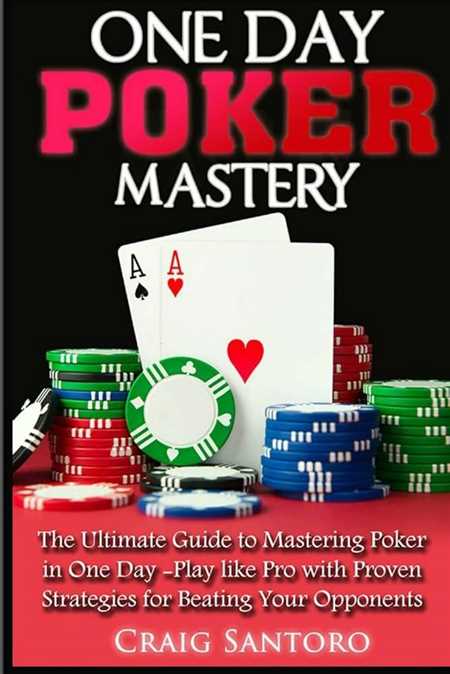

Engaging in the realm of competitive card games offers an exhilarating blend of skill, chance, and strategy. Many enthusiasts seek to enhance their understanding of gameplay, incorporating various techniques that can elevate their performance across diverse settings. This exploration delves into fundamental aspects of these captivating contests, shedding light on essential components that operate behind the scenes.
From grasping intricate gameplay mechanics to becoming acquainted with various styles of wagering, players embark on a journey filled with continuous learning. Each encounter presents unique challenges, encouraging participants to adapt and refine their approaches. By immersing oneself in the art of decision-making, participants uncover layers of depth often overlooked by casual players.
The significance of strategic planning cannot be understated, as informed choices often separate novices from seasoned competitors. Whether navigating a casual home game or engaging in high-stakes tournaments, understanding the dynamics of each situation opens doors to increased success. Consequently, this narrative aims to unravel the complexities surrounding these beloved card games, offering valuable insights to both newcomers and veterans alike.
Every version of this classic card game offers a unique experience, providing players with different challenges and dynamics. While the fundamental principles often remain constant, variations introduce distinct structures, card rankings, and betting techniques that cater to diverse playing styles and preferences. By exploring these alternatives, enthusiasts can broaden their knowledge and enhance their gameplay.
Some of the most popular variations include Texas Hold’em, where players assess their two personal cards in combination with five community cards, and Omaha, which requires participants to utilize four hole cards. Seven-Card Stud, on the other hand, diverges from community cards entirely, focusing on individual hands made from a mix of face-up and face-down cards. Each variant comes with its own set of nuances that impact strategy and decision-making.
Understanding the specifics of each variant is essential for any player aiming to excel. Simple differences, such as the number of cards dealt or the way players interact with community cards, influence both the strategy and the psychology of the game. Familiarity with these distinctions not only enhances one’s gameplay but also increases enjoyment and social interaction within different settings.
Moreover, rules can vary significantly between informal home games and official tournaments, adding an additional layer to comprehension. It is crucial to clarify the specific guidelines being followed in any given game to ensure fair play and avoid confusion. This knowledge empowers players to navigate various environments with confidence.
As players delve deeper into each variant, they are encouraged to practice and engage with others to refine their skills. Whether competing in casual settings or striving for success in more competitive arenas, understanding these game forms lays a solid foundation for personal growth and mastery.
In the realm of card competitions, various styles of play cater to different preferences and skills. Each variation boasts unique characteristics that attract both novice players and seasoned veterans. Understanding these distinctions is essential for anyone looking to enhance their gaming experience.
No-Limit Texas Hold’em stands out as one of the most widely recognized formats. In this version, players receive two personal cards and share five community cards, aiming to create the strongest hand. The lack of a cap on betting amounts allows for thrilling moments and significant stakes.
Pot-Limit Omaha offers a twist on the classic game. Here, participants are dealt four hole cards, yet must use exactly two of them in combination with three of the community cards for their final hand. The pot-limit betting structure adds an element of strategy, with decisions often hinging on the ever-changing size of the pot.
Seven Card Stud is another beloved variant, distinctive for its absence of community cards. Players receive a mix of face-up and face-down cards across multiple betting rounds, leading to an intricate game of memory and estimation. Successful participants excel at reading opponents and calculating probabilities based on exposed cards.
Five Card Draw takes a more traditional approach, allowing players to exchange cards after an initial round of betting. This simpler format can be appealing for those unfamiliar with more complex variations, while still retaining opportunities for cunning strategies and bluffing.
Each type of game presents its own set of challenges and rewards, encouraging players to delve into different styles to discover their personal favorites. Exploring these diverse formats can significantly enrich one’s overall enjoyment of the card-playing experience.
Understanding the foundational aspects of this thrilling card game is essential for anyone seeking to enhance their skills and enjoyment. Each variant brings its unique flavor, yet the core principles often remain consistent, uniting players across various cultures and regions. Grasping the mechanics of play, along with the objectives, is crucial for developing a solid strategy.
At its core, the game involves players competing against each other, aiming to create the best possible hand or to force opponents to fold. A standard deck of 52 cards is utilized, with players dealt a specific number of cards depending on the chosen variation. Betting rounds are integral, allowing participants to either increase stakes, check, call, or fold as the rounds progress.
Multiple hands occur in a single session, with players accumulating chips or money through skillful gameplay and strategic decision-making. Familiarity with hand rankings is vital, as they dictate the winner during showdowns. Each round typically culminates in revealing hands, determining the victor based on their strength.
Emphasizing patience, observation, and calculation can significantly influence one’s success. Developing a keen sense of opponents’ behavior and adapting to various scenarios enhances one’s overall gameplay, making it an engaging and dynamic experience for all involved.
Understanding various styles of card games with distinct characteristics is essential for any enthusiast. Each version brings unique elements that influence gameplay, strategy, and player experience. From card rankings to betting structures, the differences can significantly alter how a game is played and enjoyed.
Hand Rankings:
Different variants may have alternative hand rankings, which can change the approach to forming winning hands. For instance:
Number of Cards:
The number of cards dealt varies by variant:
Betting Structures:
Different betting formats can greatly impact the dynamics:
Community Cards:
Presence and usage of community cards is another distinguishing factor:
Players’ Actions:
The options available to players can differ considerably:
By acknowledging these key aspects, players can adapt their skills to suit differing formats, ensuring a more engaging and strategic experience across various styles of play.
Understanding how to employ advanced wagering methods alongside strategic deception can drastically enhance overall game performance. Mastery over these aspects not only improves one’s chances of winning but also adds depth to gameplay, enabling players to adapt to various situations effectively.
Here are some essential wagering techniques:
Bluffing is an art that, when executed properly, can be a game changer. Here are some effective bluffing techniques:
By integrating these wagering techniques and bluffing tactics into one’s play, a player can become more adaptable and formidable at the table, ultimately leading to a more rewarding experience in the world of competitive card games.
Betting intervals serve as crucial elements in card games, influencing the flow and dynamics of play. Each phase offers participants opportunities to engage by placing wagers, folding, or increasing stakes, creating a strategic layer that shapes outcomes. Familiarity with these rounds enhances players’ comprehension of the game, enabling them to make informed decisions throughout a session.
Typically, rounds occur at specific points within a hand, with distinct actions players can take. Initial phases generally start with mandatory contributions, varying based on the specific variant being played. As the game progresses, additional cards may be revealed, prompting further wagering and strategic considerations.
Players must pay close attention to both their own hands and those of their opponents during these intervals. Analyzing betting patterns offers insights into rivals’ strategies and can lead to advantageous decisions. Understanding optimal moments to bluff or solidify bets can significantly influence one’s success in various formats.
Overall, mastering the rhythm and tactics surrounding betting rounds is essential for anyone seeking to excel in this captivating realm of competition. With practice and attention, one can enhance not only their gameplay but also their enjoyment of these thrilling contests.
Bluffing serves as an essential component in many card games, creating opportunities and strategies to outsmart opponents. Successfully executing a well-timed ruse can shift the dynamics at the table, allowing you to take control, even with a less-than-stellar hand. Knowing when to employ this tactic, along with mastering the subtle nuances involved, can significantly enhance your overall game.
Timing plays a crucial role in determining when to bluff. Ideal moments often arise when the board presents favorable conditions that lead others to doubt the strength of your hand. For instance, if community cards indicate a strong possibility of a straight or flush, but your own hand appears weak, betting aggressively may persuade opponents to fold superior hands.
Understanding your opponents is equally important. Observe their playing styles–some may be more prone to folding under pressure, while others might be willing to call your bets regardless of circumstances. Targeting players who display cautious tendencies increases the likelihood of a successful deception.
Body language and behavioral cues can also serve as valuable tools. Maintaining a consistent demeanor while bluffing is essential; any sign of nervousness or hesitation can alert observant opponents. Confidence in your actions can create uncertainty about your hand’s strength, leading others to doubting their positions.
Finally, consider position at the table. Bluffing from a later position can yield better prospects, as you can observe the actions of others before making your move. This strategic advantage can inform your decisions and help you gauge the likelihood of success for your bluff.
Effectively handling your finances is crucial for achieving long-term success in card games. A well-structured bankroll not only protects your playing capital but also allows you to maximize enjoyment and minimize stress during gameplay. By implementing strategic management techniques, you can navigate the ups and downs inherent in competitive play.
Setting a Budget is the first step in maintaining a healthy bankroll. Determine an amount you can afford to lose without affecting your daily life. This figure should be strictly adhered to, ensuring that you do not dip into funds reserved for essential expenses. Allocating a specific portion for gaming purposes fosters discipline and responsibility.
Next, determining Stakes is vital for effective bankroll management. Choose appropriate limits based on your financial capacity. Generally, it is wise to invest no more than 1-5% of your total bankroll in a single session or tournament. This approach mitigates risks and allows for continued play, even in the face of inevitable losses.
Tracking Progress contributes significantly to effective financial management. Keep detailed records of wins, losses, and expenses. Analyzing this data provides insight into your performance and helps identify patterns or areas needing improvement. Consider using software tools or apps specifically designed for monitoring gaming finances.
Lastly, adjusting Your Strategy based on your bankroll status is essential. If you’re on a winning streak, you might be tempted to increase your stakes. Conversely, during a downturn, consider reducing limits to protect your remaining capital. Being flexible and responsive to your financial situation keeps you in the game longer and enhances your overall experience.